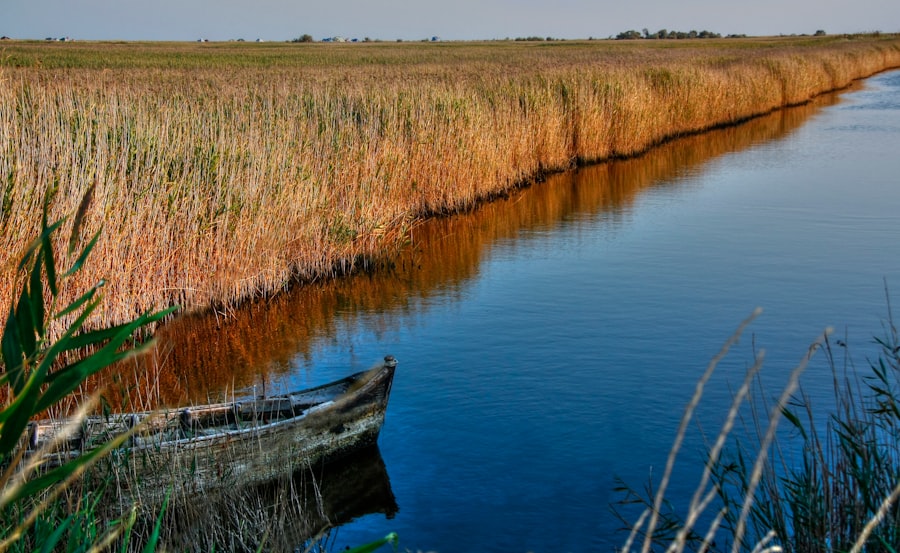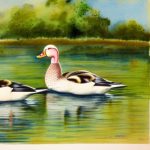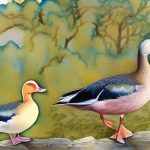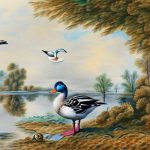Call ducks are a unique and charming breed that has been popular among breeders and enthusiasts for many years. These small, compact ducks are known for their distinctive “call” or “whistle” that sets them apart from other duck breeds. Call ducks come in a variety of colors, making them a popular choice for breeders who are interested in working with different color genetics. Breeding call ducks for specific color varieties requires a deep understanding of genetics, as well as a keen eye for selecting breeding stock that will produce the desired colors in their offspring. In this article, we will explore the fascinating world of call duck color breeding, from understanding color genetics to selecting breeding stock and maintaining color standards.
Table of Contents
- 1 Understanding Call Duck Color Genetics
- 2 Selecting Breeding Stock for Color
- 3 Breeding for Specific Color Varieties
- 4 Maintaining Color Standards in Call Duck Breeding
- 5 Challenges and Considerations in Breeding Call Duck Colors
- 6 Conclusion and Future Directions in Call Duck Color Breeding
- 7 FAQs
- 7.1 What are the different colors of call ducks?
- 7.2 How do breeders select for specific colors in call ducks?
- 7.3 Are certain colors more desirable in call ducks?
- 7.4 Can call duck colors be influenced by genetics?
- 7.5 Are there specific breeding techniques used to produce certain colors in call ducks?
Key Takeaways
- Call ducks are a popular breed for exhibition and breeding due to their small size and wide variety of color patterns.
- Understanding color genetics is crucial for breeders to produce specific color varieties in call ducks.
- Selecting breeding stock with desired color traits is essential for maintaining and improving color standards in call duck breeding.
- Breeders can use specific breeding techniques to achieve and enhance specific color varieties in call ducks.
- Maintaining color standards in call duck breeding requires careful selection and breeding practices to avoid color dilution or undesired variations.
- Breeding call duck colors comes with challenges such as genetic mutations and color inconsistencies, requiring breeders to carefully consider their breeding strategies.
- In conclusion, the future of call duck color breeding lies in continued research and breeding efforts to maintain and improve color standards in this popular breed.
Understanding Call Duck Color Genetics
Call duck color genetics can be complex and fascinating, as there are many different genes that contribute to the wide range of colors found in this breed. Understanding the basics of color genetics is essential for breeders who want to produce specific color varieties in their call duck offspring. The most common colors found in call ducks include white, gray, blue, fawn, pastel, and black, with various patterns and markings adding to the diversity of color options. In order to produce specific colors in call duck offspring, breeders must understand how different genes interact and influence the expression of color. This includes genes for base color, dilution, pattern, and other modifiers that can affect the final appearance of the duck. By studying the inheritance patterns of these genes and learning how to predict the outcomes of different breeding combinations, breeders can work towards producing the colors they desire in their call duck lines.
Selecting Breeding Stock for Color
Selecting the right breeding stock is crucial for producing specific colors in call duck offspring. Breeders must carefully evaluate the color and genetic makeup of their breeding ducks in order to make informed decisions about which individuals to pair together. This involves assessing the base color, pattern, and other genetic factors that contribute to the overall appearance of the ducks. Breeders should also consider the genetic history of their breeding stock, as well as any potential hidden traits that could affect the expression of color in their offspring. By selecting breeding stock with desirable color traits and a strong genetic background, breeders can increase the likelihood of producing the colors they are aiming for in their call duck lines. Additionally, it is important to consider the overall health and conformation of the breeding stock, as healthy ducks are more likely to produce healthy offspring with vibrant and consistent coloration.
Breeding for Specific Color Varieties
Breeding for specific color varieties in call ducks requires careful planning and strategic pairings to achieve the desired results. Once breeders have a solid understanding of call duck color genetics and have selected suitable breeding stock, they can begin to work towards producing specific colors in their offspring. This may involve using Punnett squares and other genetic tools to predict the outcomes of different breeding combinations and identify which pairings are most likely to produce the desired colors. Breeders may also need to consider the potential for hidden traits or unexpected genetic interactions that could affect the expression of color in their offspring. By carefully tracking the genetic makeup of their breeding ducks and making informed decisions about pairings, breeders can gradually work towards refining and improving the color varieties found in their call duck lines.
Maintaining Color Standards in Call Duck Breeding
Maintaining color standards is essential for preserving the integrity and quality of call duck breeds. Breeders should strive to adhere to established color standards for call ducks, which outline the ideal coloration and markings for each recognized variety. This involves carefully evaluating breeding stock and offspring to ensure that they meet the specified color standards for their variety. Breeders should also be mindful of any potential deviations from the standard, such as undesirable markings or off-color plumage, and work to eliminate these traits from their breeding lines. By maintaining strict adherence to color standards, breeders can help to preserve the unique and diverse range of colors found in call ducks, while also promoting consistency and quality within their breeding programs.
Challenges and Considerations in Breeding Call Duck Colors

Breeding call duck colors can present a number of challenges and considerations for breeders to navigate. One common challenge is the potential for unexpected genetic interactions that can produce variations in color or markings that differ from what was anticipated. Additionally, some color varieties may be more difficult to produce than others due to the complexity of their genetic makeup. Breeders may also encounter challenges related to maintaining consistent coloration across multiple generations, as well as managing potential genetic issues that can arise from intensive selection for specific colors. It is important for breeders to approach these challenges with patience and perseverance, while also seeking out resources and support from experienced breeders and genetic experts who can offer guidance and advice on navigating these complexities.
Conclusion and Future Directions in Call Duck Color Breeding
In conclusion, call duck color breeding is a fascinating and rewarding pursuit that requires a deep understanding of genetics, careful selection of breeding stock, and a commitment to maintaining color standards. By applying knowledge of color genetics and making informed decisions about pairings, breeders can work towards producing specific color varieties in their call duck lines. It is important for breeders to remain vigilant in maintaining color standards and addressing potential challenges related to breeding for specific colors. Looking ahead, future directions in call duck color breeding may involve continued research into color genetics, as well as efforts to expand and refine the range of colors found in this beloved breed. With dedication and a passion for preserving and enhancing the beauty of call ducks, breeders can continue to make valuable contributions to the world of aviculture through their work with color genetics in call duck breeding.
If you’re interested in breeding call duck colors, you might also want to learn about the incubation period for goose eggs. Understanding the incubation process is crucial for successful breeding. Check out this informative article on Poultry Wizard to gain valuable insights into the incubation period for goose eggs and enhance your knowledge of breeding waterfowl.
FAQs
What are the different colors of call ducks?
Call ducks come in a variety of colors including white, gray, blue, pastel, butterscotch, and chocolate. These colors can be further combined with various patterns such as bibbed, magpie, and pied.
How do breeders select for specific colors in call ducks?
Breeders select for specific colors in call ducks through careful breeding practices. This involves selecting ducks with the desired color traits and pairing them to produce offspring with the same or similar colors.
Are certain colors more desirable in call ducks?
Certain colors may be more desirable in call ducks depending on the preferences of individual breeders and the standards set by breed associations. Some colors may be more rare or sought after, leading to higher demand.
Can call duck colors be influenced by genetics?
Yes, call duck colors are influenced by genetics. Different genes control the expression of specific colors and patterns, and breeders can use this knowledge to selectively breed for desired traits.
Are there specific breeding techniques used to produce certain colors in call ducks?
Breeders may use specific breeding techniques such as crossbreeding, line breeding, and selective pairing to produce certain colors in call ducks. These techniques help to maintain and enhance desired color traits in the offspring.
Meet Walter, the feathered-friend fanatic of Florida! Nestled in the sunshine state, Walter struts through life with his feathered companions, clucking his way to happiness. With a coop that’s fancier than a five-star hotel, he’s the Don Juan of the chicken world. When he’s not teaching his hens to do the cha-cha, you’ll find him in a heated debate with his prized rooster, Sir Clucks-a-Lot. Walter’s poultry passion is no yolk; he’s the sunny-side-up guy you never knew you needed in your flock of friends!







